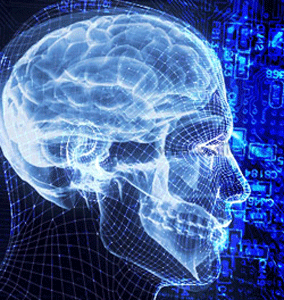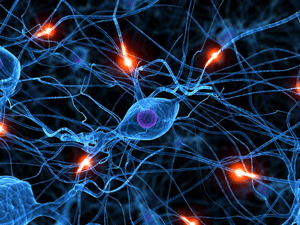 The psychology of online persuasion is one of the fastest growing marketing disciplines in the world today. There are now more than 1 billion websites and this is expected to exceed 2 billion by 2015. Studying online consumer behaviour is critical for marketers seeking new ways to drive sales of products and services.
The psychology of online persuasion is one of the fastest growing marketing disciplines in the world today. There are now more than 1 billion websites and this is expected to exceed 2 billion by 2015. Studying online consumer behaviour is critical for marketers seeking new ways to drive sales of products and services.
Attracting the right kind of customer or client to a website isn’t simply a matter of whether or not they can afford to purchase your product or service, as important as this is. It’s more scientific than that. In fact, it’s neurochemical.
Scientific research explains that your customers experience the world through each of the five senses, translating sensory information into thought processes; both consciously and unconsciously. These thought processes activate the neurological system, which in turn drives physiology, emotions and behaviour – offline and online.
Over the last 50 years, neuroscientists have carried out extensive research as to why some parts of our brain quite literally ‘light up’ as a result of heightened neural activity, depending on the nature of the stimulus to which the brain reacts to.
 For example, different regions of the brain are active when someone picks up an expensive pair of Jimmy Choo shoes, thinks of a pleasant stroll through their favourite park or bumps into a friend when out shopping. Other emotions are aroused when someone is in a state of conflict or in a state of concentration when seeking a solution or product for a particular issue or problem.
For example, different regions of the brain are active when someone picks up an expensive pair of Jimmy Choo shoes, thinks of a pleasant stroll through their favourite park or bumps into a friend when out shopping. Other emotions are aroused when someone is in a state of conflict or in a state of concentration when seeking a solution or product for a particular issue or problem.
Although neuroscientists are careful to avoid the language of “this part of the brain does such and such…,” they’ve learned a great deal about the “personalities” of different brain regions. The contribution of analyses of brain activity to psychological interpretation is improving in leaps and bounds. It even points to clues as to how someone will behave on a website.
Before we explore this from a marketing perspective, here are the four main neurochemicals in the brain that affect feelings, thoughts, emotions and moods.
1. Serotonin – Serves to elevate mood. It’s the satisfied feeling derived from a delicious meal, or from a long run. It can be depleted as a result of stress levels and anxiety, leading to feelings of depression, irritability and exhaustion.
2. Epinephrine – This is responsible for the ‘flight or fight’ response. Epinephrine reflects the growing amounts of stress felt in today’s fast-paced world, from rush hour traffic to racing to meet a deadline. This neurotoxin affects heart rate, blood pressure and the nervous system. It’s linked to the body’s ability to repair itself from a physical injury as well as its ability to shut down for sleep.
3. Dopamine – This affects sleeping and waking cycles and can also become depleted as a result of chronic stress, anxiety, and intense trauma.
4. Endorphin – The body’s natural painkillers are responsible for the decrease in physical pain (such as a runner’s ‘high’).
Research on neurochemicals conducted by biological anthropologist Dr. Helen Fisher at Rutgers University may hold the key as to whether someone is more likely to buy from your website or not, depending on their neurochemical balance!
Professor Fisher identifies four personality types that each of us fall into, depending on our genes and neurochemical balance:
1. Explorers
Predominant neurochemical: dopamine. Traits: seek out the new, unusual, playful, intriguing, high energy, impatient.
How marketers should engage: Submit your website to discovery engines like StumbleUpon. Ensure you’re on foursquare, Twitter and Instagram.
This segment responds well to last minute deals and competitions that attract their attention. Constantly refresh your online content to keep them engaged.
2. Builders
Predominant neurochemical: serotonin. Traits: prefer structure and rules. Not impulsive and like to take their time.
How marketers should engage: Make sure your website navigation is simple, well organised and easy to follow. Long-term relationships are important to builders. They prefer platforms like LinkedIn and Facebook because these are well-structured.
Keep communication friendly but not overtly intrusive. Pay attention to the check-out mechanism on the website to ensure it’s clearly marked as part of a series of steps or stages they can easily see and follow.
3. Negotiators
Predominant neurochemical: epinephrine. Traits: good with people, politically astute, read other people well, patient, compassionate.
How marketers should engage: Negotiators enjoys social media and connecting with family and friends. Project a positive image with all of your user reviews, social recommendations, product info and photos.
Use creative design and intuitive user experience on your website. Create and use videos with care in order to reflect negotiators’ personality traits and connect with them.
4. Director
Traits: Highly competitive, goal-orientated, not that interested in social engagement online. Make decisions decisively and swiftly.
How marketers should engage: This customer segment tends to consume news channels, Twitter, LinkedIn and email marketing above all other online marketing channels.
They evaluate products and services from the perspective of how they can be used to achieve goals and objectives. Use evidence-based marketing to substantiate claims on your website.
 By joining up the dots – understanding the personality traits of your customers, clients, prospects and supporters mapped against their neural activity and observing their purchasing choices online – future marketers might map their way to neurochemical success!
By joining up the dots – understanding the personality traits of your customers, clients, prospects and supporters mapped against their neural activity and observing their purchasing choices online – future marketers might map their way to neurochemical success!
If this is something you’re interested in, there’s more about this in my new book, The Art of Influencing and Selling














Recent Comments